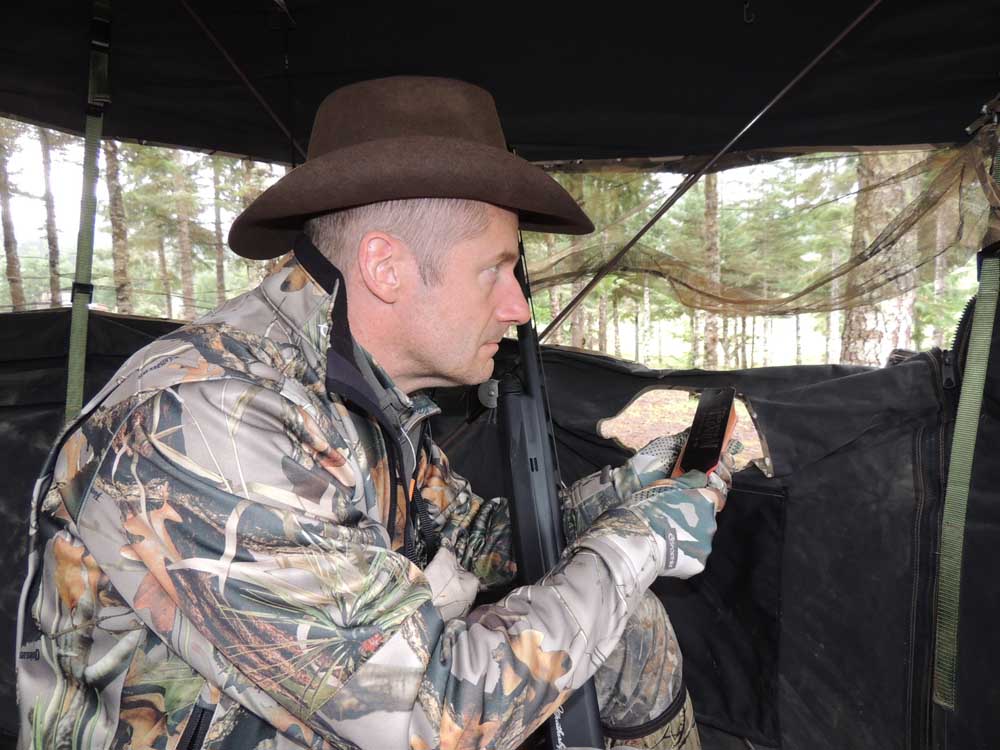Turkey hunting in Eastern Oregon
Published 12:00 am Wednesday, April 9, 2014

- Turkey hunting in Eastern Oregon
Facemask. Check. Box call. Check. Binocular. Check. It’s that time of year again, when turkeys gobble and strut and hens get the butterflies. Literally. I’ve seen them chase and eat butterflies.
While the females leap for Lepidoptera, the toms get all frustrated and their snoods and wattles turn red. They’ll run a mile if they think they can pick up another hen for the harem. That’s what we dream the night before opening day anyway.
According to the Department of Fish and Wildlife, Oregon turkey hunters tagged an estimated 3,732 toms in last year’s spring season. Once again, the unit that produced the most turkeys was the Melrose with 439 birds and an average 3.02 days of hunter effort, 0.46 birds per hunter and 0.15 birds per hunter day.
Southwest Oregon’s Melrose Unit is Oregon’s most productive turkey hunt, but the most popular is the White River on the eastern slope of Mount Hood. With its proximity to Portland, this unit sees almost twice as many hunters and the success rate runs lower at about 0.25 birds per hunter.
Southwest Oregon’s Rogue Unit ranks third in popularity and turkey harvest. Again, the nearness of a large population center, Medford, plays a role. The same is true of the Willamette Unit, where there are plenty of birds but not much public access.
“I think there are better places to hunt turkeys than these units that get all the attention,” says Mikal Moore, the Pacific Northwest biologist for the National Wild Turkey Federation and a recent recruit to turkey hunting. Her line of work affords opportunity to carry a shotgun from time to time.
When looking for a place to hunt, Moore recommends that hunters think in terms of habitat types and recent events.
She recommends hunters keep track of places where forest fires wiped out the brush and burned out timber to open up the understory.
“The turkeys like those kinds of places and I like them too, because it makes it so easy to see the sign,” Moore says. “I walk out there in the burn and I can see the droppings, the tracks, the wing marks. It’s turkey hunting for dummies.”
Only two of the top 10 Oregon turkey units are in Northeast Oregon: Mt. Emily and Ukiah. Those units in that northeast corner have less acreage, though. It is good habitat; it just doesn’t show as much productivity because there is not as much ground to hunt. Also, this corner of the state is farther away from Portland, so it gets less attention. That’s a good thing.
Other good bets in Northeast Oregon include Murderer’s Creek, Sled Springs, Fossil, Northside, Sumpter, Wenaha and Keating. Access can be easier because of the large amount of public land in the Wallowa-Whitman and Umatilla national forests.
Spring finds turkeys in the foothills, primarily on the north slopes, but they begin to work their way up to higher elevations as the snow melts. And in this year of light snowpack, turkeys might be higher in the forest than in other springs.
Oregon’s turkey season runs Tuesday through May 31. The daily bag limit is one male or one turkey with a beard. Hunters are allowed two turkeys for the season, except that a third may be taken in some counties. A separate tag is required for each turkey.
“If you think about it, the places with recent burns, within the last year or two, are going to be the best places,” Moore says. “The toms, they will want to display in more open areas. And that’s where the fresh greens will be.”
And the butterflies.
— Gary Lewis is the host of “Frontier Unlimited” and author of “John Nosler — Going Ballistic,” “A Bear Hunter’s Guide to the Universe,” “Hunting Oregon” and other titles. Contact Lewis at www.GaryLewisOutdoors.com.






